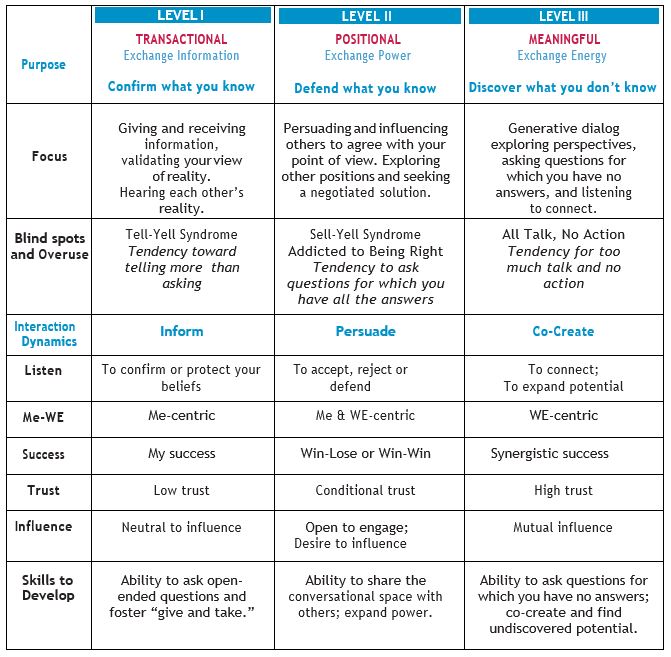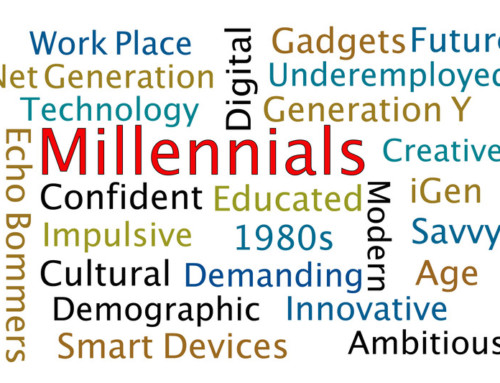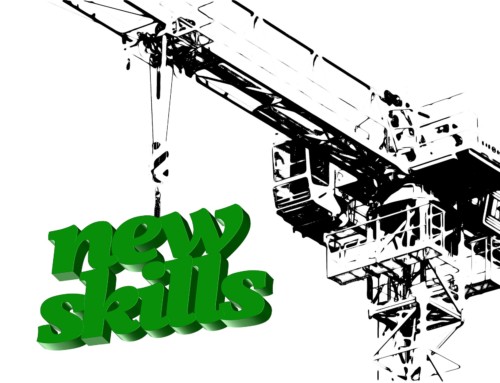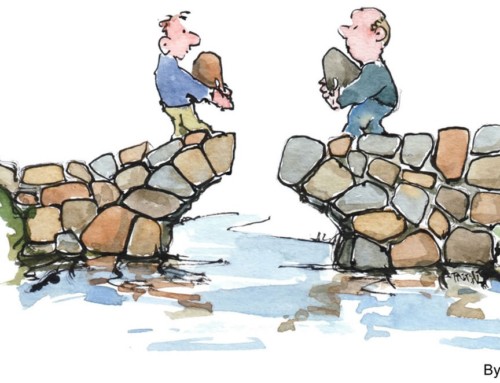Change Your Conversations to Change your Culture
Consider this simple model that explains how our daily conversations are the ultimate driver of desired outcomes:

If you want to build a workplace culture of high trust, it begins by changing the quality of your workplace conversations. Let’s look at two examples of how this is done, first focusing on three levels of conversation, then on a particular example of the third level of conversation: the coaching conversation.
Three Levels of Conversation
In her book Conversational Intelligence: How Great Leaders Build Trust & Get Extraordinary Results, Judith Glaser offers a simple matrix of three levels of conversation. In low-trust organizations, the vast majority of conversations take place in the first two levels, while high trust organizations have many more conversations at the third level. This chart summarizes the key elements that define each level of conversation.

Coaching as a Level III Conversation
We have found that there is a very special type of conversation you must master if you wish to develop people: the coaching conversation. We have developed an entire curriculum to teach leaders this special type of conversation, which allows them to shift almost any discussion into a level III conversation. Below is a chart outlining the hallmarks of a coaching conversation.
| More of This | Less of This |
| Asking Questions | Telling people what to do |
| Focus on solutions | Focus on problems |
| Curiosity | Close-Minded |
| Listening | Assumptions |
| Courage and Candor | Avoiding tough conversations |
| Accountability | Misunderstandings |
| Caring | Blame |
A Curriculum for Meaningful Conversations
We have developed a full curriculum to help leaders learn the skills of meaningful conversations. When put into practice, these new conversation skills can move your organization over the trust gap found in the majority of organizations today. These are the essential skills that can be leveraged into your own blended learning approach to change your leadership behaviors and mindsets.
| The Neuroscience of Positive Conversations | Overcoming Barriers to Listening | Questions to Expand Thinking |
| The Business Case for Coaching | Coaching for Performance | Follow-up Conversations to Build Positive Habits |
| Developing Your Authentic Leadership Style | Career Conversations that Leverage Strengths | Giving Feedback Well: Courageous Conversations |
| Receiving Feedback Well | Developing a Growth Mindset | Team Coaching for High Functioning Teams |
| Accountability Conversations | 4 Ways to Increase Employee Recognition | Embedding a Culture of Coaching |
In Summary
A high performance organization is built on a foundation of trust. Trust is developed one relationship at a time, one conversation at a time. If you build the skills of meaningful conversations and coaching into your leadership repertoires, you will happily find your organization on the way to sustainable, long-term success.






Leave A Comment
You must be logged in to post a comment.